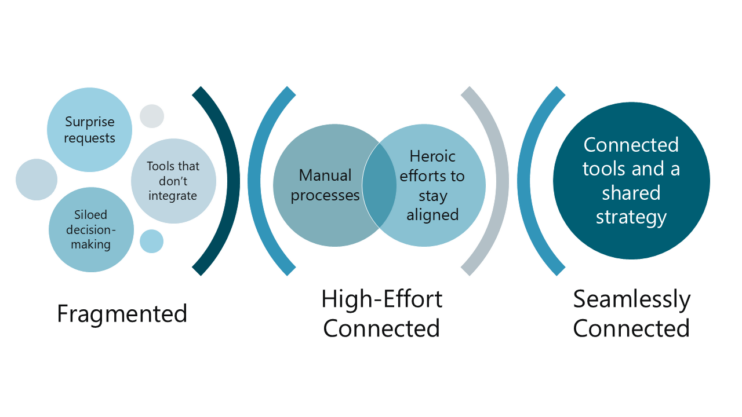What’s Missing? Building a Connected Nonprofit from the Inside Out

Nonprofits understand gaps—gaps in funding, gaps in services, gaps in outcomes. But what about the gaps within our own organizations? The ones between departments, between people, between processes. These are the foundational cracks that can quietly undermine our mission, even as we work tirelessly to fulfill it.
If your organization feels like it’s spinning its wheels, struggling to tell a cohesive financial story, or constantly playing catch-up across departments, it might be time to ask a deeper question: What is missing?
The Cracks in the Foundation
Many nonprofits find themselves operating in silos. Fundraising and finance, though deeply interdependent, often speak different languages, use different tools, and pursue different goals. The result? Fragmented data, increased risk, misaligned strategies, and a disjointed narrative that makes it harder to build trust with donors, board members, and the community.
This isn’t just a systems issue—it’s a cultural one. A cracked foundation isn’t fixed by just plugging in new software or Al-powered tools. It’s repaired by rethinking how people work together, how processes are designed, and how transparency and trust are cultivated across the organization.
Connected Systems Require Connected People
Technology can be a powerful enabler, but it’s only as effective as the culture it supports. A seamlessly connected nonprofit isn’t just one with integrated CRM and financial systems—it’s one where:
- Fundraisers understand financial stewardship, and finance understands donor intent
- Teams share goals, not just data
- Processes are designed for collaboration, not just compliance
- Transparency is a shared value, not just a reporting requirement
When people are connected—through shared understanding, mutual respect, and aligned incentives—systems begin to reflect that connection. Data flows more easily. Reports are more accurate. Stories are more compelling. And trust becomes a natural outcome.
From Fragmented to Unified: A Cultural Shift

Think of your organization on a spectrum:
Fragmented: Departments operate independently, communication is reactive, and collaboration is minimal.
What this may look like:
- Campaigns or grant applications are initiated without any cross-departmental consulting, resulting in uncoordinated work and surprise requests for details and data.
- Departments use a variety of disconnected tools and systems, making the sharing of information and providing updates manual and labor intensive resulting in reports that never seem to match.
- Decisions are made in silos, and information is shared only when necessary. This may even look like an active avoidance of communication and collaboration.
High-Effort Connected: Teams want to work together but rely on manual processes and heroic efforts to stay aligned.
What this may look like:
- Weekly meetings are the only way teams stay informed, often requiring hours of prep and follow-up.
- Juggling multiple spreadsheets and long email threads, with no centralized system to support the work or keep it updated.
- Individuals take it upon themselves to bridge gaps—like a major gift officer manually updating multiple teams on capital campaign progress.
Seamlessly Connected: Collaboration is embedded in culture, supported by integrated systems, and driven by a shared purpose.
What this may look like:
- Cross-department teams co-create strategies in shared workspaces with real-time updates.
- Integrated tools automatically surface relevant insights across departments.
- Everyone understands how their work contributes to the broader mission, and collaboration happens naturally, such as Development and Finance jointly reviewing campaign performance in a shared dashboard and presenting unified information to the Board of Directors.
Moving along this spectrum is about efficiency as much as it is about impact. When your internal operations are aligned, your external story becomes clearer, stronger, and more trustworthy. With alignment, anybody in the organization can tell your story with confidence, consistency, and ease. All will be working from a single source of truth that is accessible and up to date.
What’s Your Missing Piece?
Every organization has its own blind spots. Maybe it’s a lack of shared terminology. Maybe it’s outdated processes. Maybe it’s a culture that hasn’t yet embraced cross-functional collaboration. The key is to start by asking, “What’s missing—and what would be possible if it were in place?”
What if your fundraisers could pull real-time financial data for a donor meeting or when a donor calls? If they can’t, it may mean that your teams aren’t aligned or they are operating in silos. If fundraisers and finance aren’t sharing goals or data, this is an opportunity for better cross-functional processes and shared language. Fixing this piece will lead to better communication and more opportunities.
What if your finance team had full visibility into donor agreements and campaign goals? If they don’t, it may mean that current systems haven’t been designed for how people need to work together, which makes teams rely on manual updates and massive efforts to stay aligned. Addressing this creates a supportive culture built on collaboration and connection between people and systems.
What if your board could see a unified dashboard showing both financial health and mission impact? If they aren’t, your organization may be struggling to tell a unified story, internally and externally. You may be struggling with fragmented data and inconsistent reporting. When you are more unified, you are better equipped to build trust and credibility with your stakeholders.
These operational improvements become strategic advantages when they are supported by intentional training, access, and system design.
One Piece at a Time
Ultimately, the goal isn’t just to connect systems. It’s to connect people to the mission, to each other, and to the tools that help them do their best work. That starts with a shared vision, a commitment to transparency, and a willingness to rethink how we work.
So, what is missing in your organization? And what would it take to build a truly connected nonprofit—from the inside out—on a solid foundation?
Is your organization ready to eliminate the divide between your fundraising and finance teams? Check out our guide, Your Playbook for a Seamlessly Connected Nonprofit, to learn how to foster frictionless collaboration and improve transparency across your organization.



